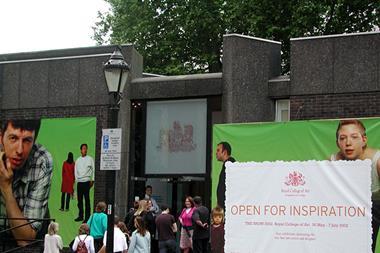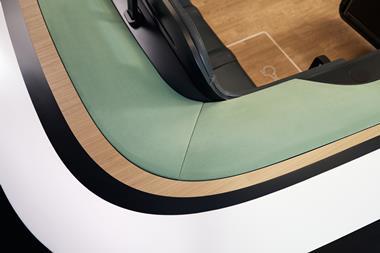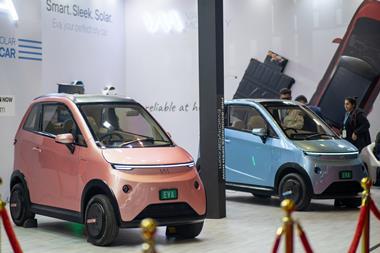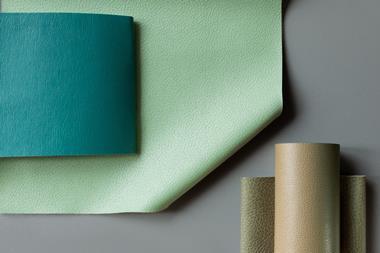June 4, 2003 - First year Vehicle Design students at London's Royal College of Art have recently participated in a design project sponsored by ED2, the Toyota Europe Design Studio.
Toyota has a strong heritage in the SUV market, pioneering in Europe with the RAV 4, one of the first 'soft roaders', and one of the best-sellers today. The Toyota Landcruiser is the world's best-selling SUV, and now in it's 50th year. Beginning in November 2002, the project set the challenge for the students to define the future of the SUV, specifically for the Y-generation, and analyse Toyota’s new brand philosophy, "Vibrant-Clarity".
Initially the students developed their thought through team-work which looked into future trends including sustainability, technology and social change. In early December at a project review with the Toyota designers, the students presented their ideas as multimedia film presentations. This set the context for their design studies, which developed their designs individually within this framework. Each student was encouraged to develop experimental design solutions, which went beyond simple analysis and re-styling of existing products. This produced a great variety of solutions with the students looking at new materials and technology, new interior concepts and realising their designs as prototypes or visual representations.
The project concluded with the final presentation review and exhibition in the galleries of the Royal College of Art in early April.
David Beasley presented 'hi' (human interface), 'a personification of simplification': a soft, fun off-road vehicle with intelligent technology and simple controls.
Jussi Timonen's 'Quaoar' is a reinterpretation of 'vibrant vlarity' combining sport, utility, functionality and ultimately a fun driving experience. The visual design is based on unique packaging, including exterior, interior, chassis, power-trinwheel units and FCEV-technology. The digital model was presented using Opticore Realizer software, allowing the model to be rotated, underlying structure to be displayed, and doors, hatches and seats to be moved in real time.
Alvaro Del Campo presented 'One Shape', with the emphasis on simple, clear forms, each element driven by it's function.
'Pulse' by Dimitri Zacharopoulos, reflects the 'alive and active attittude of both male and female Generation Y'. For use in urban terrain, the vehicle is a compact and friendly SUV, evolved to sustain it's position in a demanding society.
Serge Porcher's 'Zip' seeks to combine the individual freedom of it's driver with social acceptance. Soft fabric panels reduce the force of impact, and create a smooth and unthreatening character. The graphic seperation of the panels by a zipper is inspired by the pure graphics of Japanese characters.
Under the theme "Crush the earth lightly", Thomas Eaton, Benjamin Walsh and Viktor Holmqvist presented an exterior and interior concept that seeks to be simple and sophisticated, soothing and exciting, low tech and high tech. Their interpretation of 'Vibrant Clarity' is about crafting controlled contradictions: a rugged and sensitive vehicle which provides everyday adventure.
'Creature SUV' by Gareth Thomas takes inspiration from animals, with the soft surfaces on the exterior protecting those outside, while a solid understructure provides protection for those inside.
The form derives from the elastic properties of the soft enveloping membrane, a reflection of Japanese aesthetics. The soft skin also adapts to changes in ride height and suspension movements.
In Kim Soo Heung's interpretation, clarity means 'a clear identity' translated into a characteristic object, one that uses the emotional lines and shapes from nature, in this case aquatic forms, to express vibrancy.
One of the groups looked at SUV designs based on the function of the most typical or common vehicle of a foreign country and culture, but with the aesthetics, utility, and attitude driven by each designers own country's national identity, their individual attitudes and beliefs, and those of the customers for whom the vehice was designed.
Mediterranean lifestyle and Scandinavian functionality combine in Daniel Rodrigues' concept, designed around the idea of Spanish 'Joy for life'. An open vehicle connecting it's occupants to the world around them, and 'a quest for a deeper emotional involvement in the driving experience'.
Linda Andersson's 'Jiro' is a sporty coupe with the practicality of an SUV, influenced by the rugged American truck culture and the Scandinavian national identity of simplicity and purity.
Toyota offered prizes for their favorite design solutions, and the winners were announced by the President of Toyota Europe Design, Wahei Hirai, at the final presentation review and exhibition:
Gareth Thomas - overall winner, trip to Toyota Design Studios, Japan.
Jussi Timonen - Summer 2003 internship with ED2
Daniel Rodriguez Ramiro - Summer 2003 internship with ED2.
Thomas Eaton, Benjamin Walsh, Viktor Holmqvist, Group Presentation, highly commended, short visit to ED2.
Alvaro Del Campo Barcena, Serge Porcher, Heung Soo Kim, Finalists.
Toyota Design staff were fully embedded in the project and attended all intermediate and final presentations. This proved to be a unique experience for all involved and is fundamental to the Vehicle Design department strategy of working closely with industry.
"The Vehicle Design Department works closely with leaders in the subject and discipline", says Dale Harrow, Vehicle Design Course Leader. "This can take many forms, but one of the most successful collaborations is through project work with a leading industrial sponsor. The department acts as an ideas laboratory to fully explore the future of transportation design through innovative design research."
The Royal College of Art is a wholly postgraduate university of art and design, specialising in teaching and research and offering the degrees of MA, MPhil and PhD across the disciplines of fine art, applied art, design, communications and humanities.
Royal College of Art website: www.rca.ac.uk
Photos: Brett Patterson

Presentation in the Royal College of Art galleries.

'hi' by David Beasley
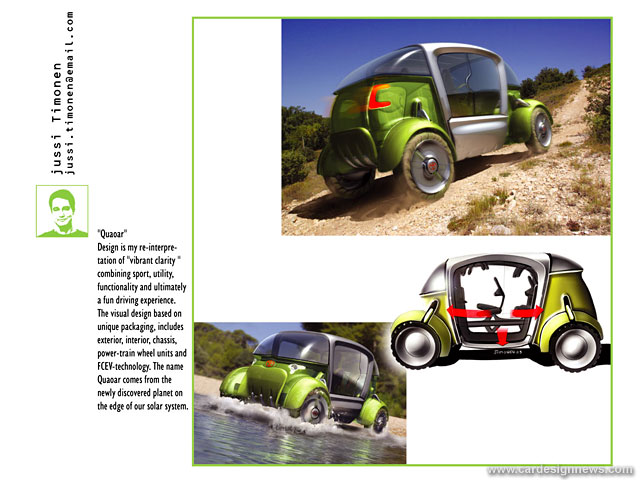
'Quaoar' by Jussi Timonen
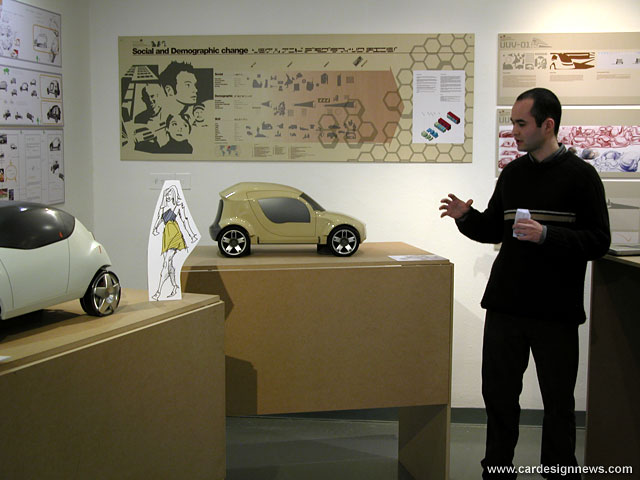
Alvaro Del Campo presents his 'One Shape' concept
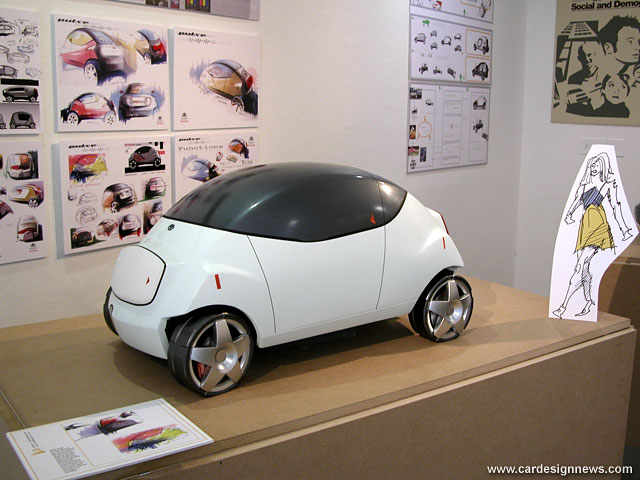
'Toyota Pulse' by Dimitri Zacharopoulos
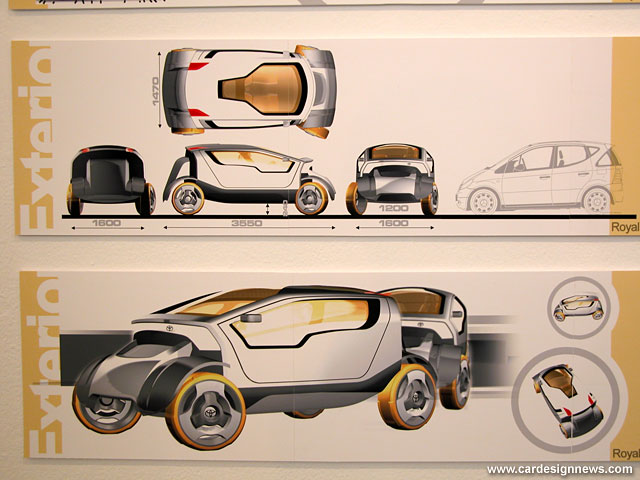
Tiago Dias
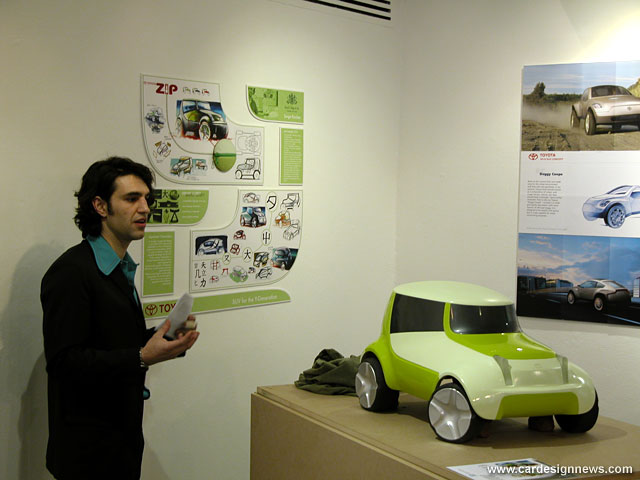
'Zip' by Serge Porcher
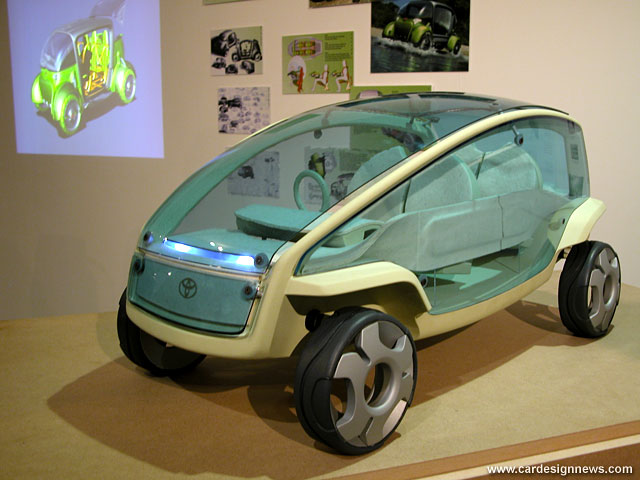
'Crush the earth lightly' by Thomas Eaton, Benjamin Walsh and Viktor Holmqvist
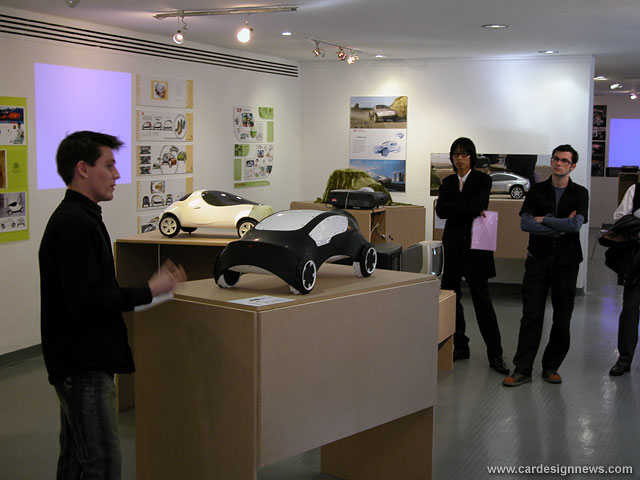
Gareth Thomas presents 'Creature SUV'
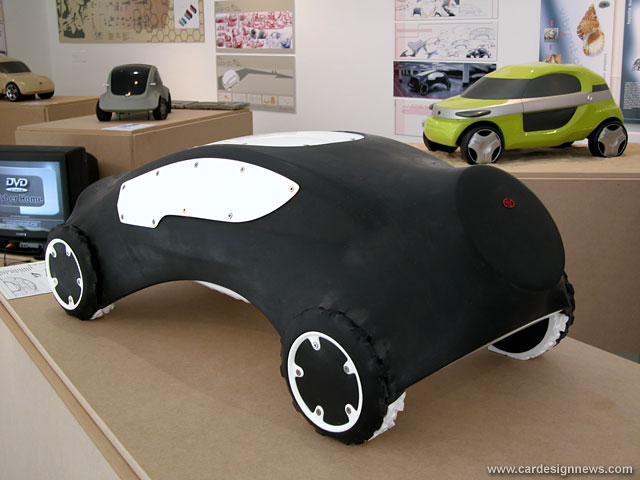
'Creature SUV' by Gareth Thomas
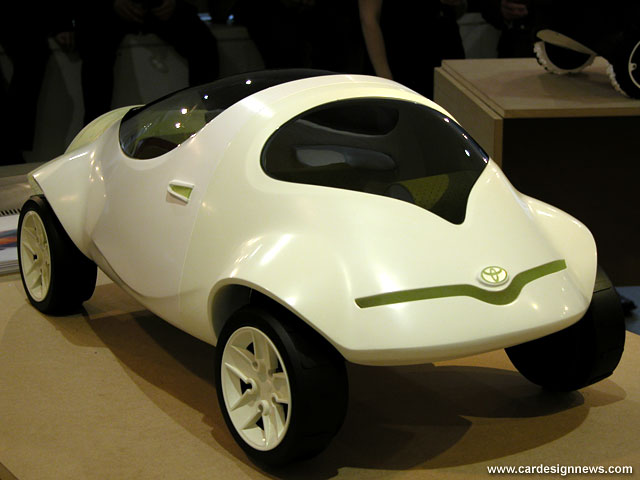
Kim Soo Heung
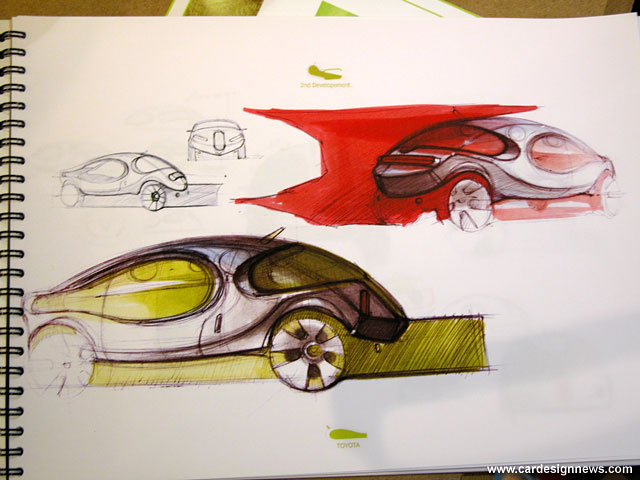
Kim Soo Heung
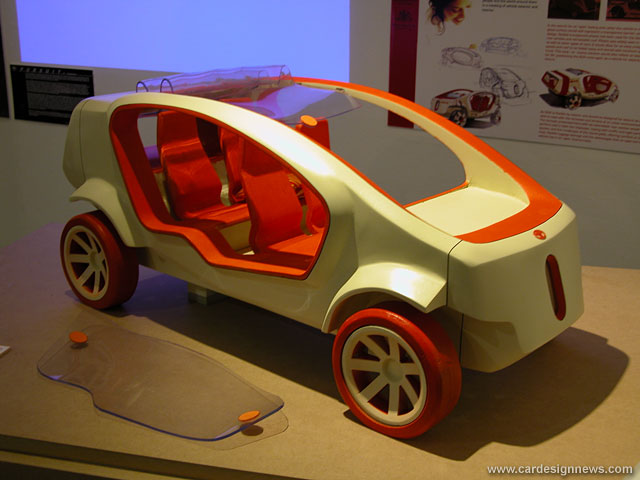
Daniel Rodrigues
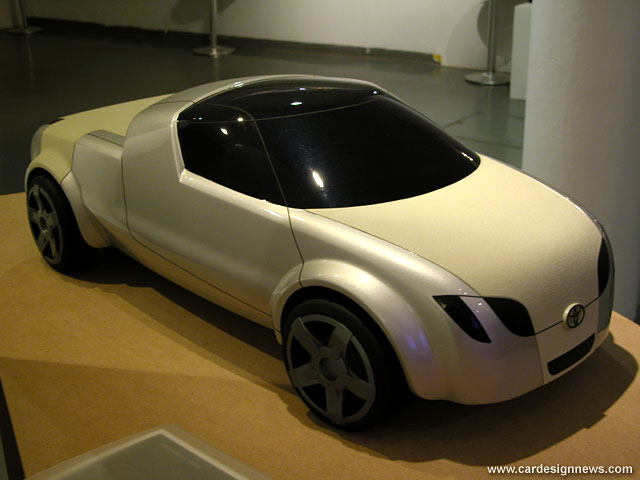
'Jiro' by Linda Andersson
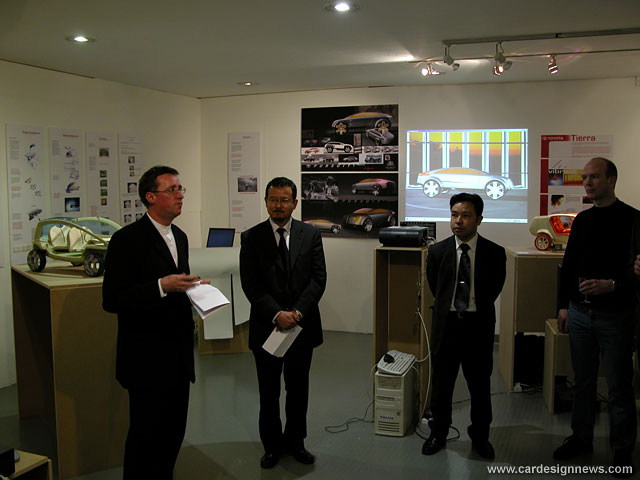
RCA Vehicle Design course leader Dale Harrow with Toyota Europe Design President Wahei Hirai and Deputy General Design Manager Kazuhisa Einaga































